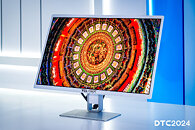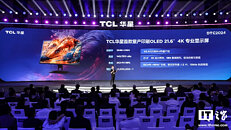- Joined
- Aug 19, 2017
- Messages
- 2,894 (1.04/day)
Chinese giant TCL has officially begun mass production of inkjet-printed OLED displays. The company's subsidiary, TCL CSOT, is leading this initiative with its first product: a 21.6-inch 4K UHD panel designed for professional monitors. The new display boasts a 204 pixels per inch density and coverage of 99% of the DCI-P3 color space. With a maximum brightness of 350 cd/m², the panel is suited for professional applications, with TCL CSOT targeting the medical sector. Additionally, the firm advertises more than 1,000,000:1 contrast ratio. Using the leftovers from JOLED's closure, a Japanese venture that previously attempted similar technology but filed for bankruptcy in 2023, TCL's approach utilizes Gen 5.5 glass substrates measuring 1,300 × 1,500 mm. Notably, it incorporates other materials from the former Japanese pioneer.
Printed OLED technology promises more cost-effective display production compared to traditional methods. Unlike traditional evaporation methods in OLED production that use shadow masks and waste significant amounts of material, inkjet OLED printing allows for precise deposition of organic materials directly onto substrates. This maskless process not only reduces material waste but also minimizes contamination risks, which is crucial given OLEDs' sensitivity to environmental factors. The choice of starting with medical monitors mirrors JOLED's initial strategy from 2017, when they launched a similar 21.6-inch 4K panel for the same market segment. TCL has already announced plans to expand its printed OLED lineup in 2025 with additional display sizes. The success of this venture could potentially revolutionize OLED display manufacturing, making high-quality screens more accessible across various market segments, and we hope, one day, the enthusiast segment. TCL's consumer brand carrying these printed displays will be named APEX.


View at TechPowerUp Main Site | Source
Printed OLED technology promises more cost-effective display production compared to traditional methods. Unlike traditional evaporation methods in OLED production that use shadow masks and waste significant amounts of material, inkjet OLED printing allows for precise deposition of organic materials directly onto substrates. This maskless process not only reduces material waste but also minimizes contamination risks, which is crucial given OLEDs' sensitivity to environmental factors. The choice of starting with medical monitors mirrors JOLED's initial strategy from 2017, when they launched a similar 21.6-inch 4K panel for the same market segment. TCL has already announced plans to expand its printed OLED lineup in 2025 with additional display sizes. The success of this venture could potentially revolutionize OLED display manufacturing, making high-quality screens more accessible across various market segments, and we hope, one day, the enthusiast segment. TCL's consumer brand carrying these printed displays will be named APEX.


View at TechPowerUp Main Site | Source







